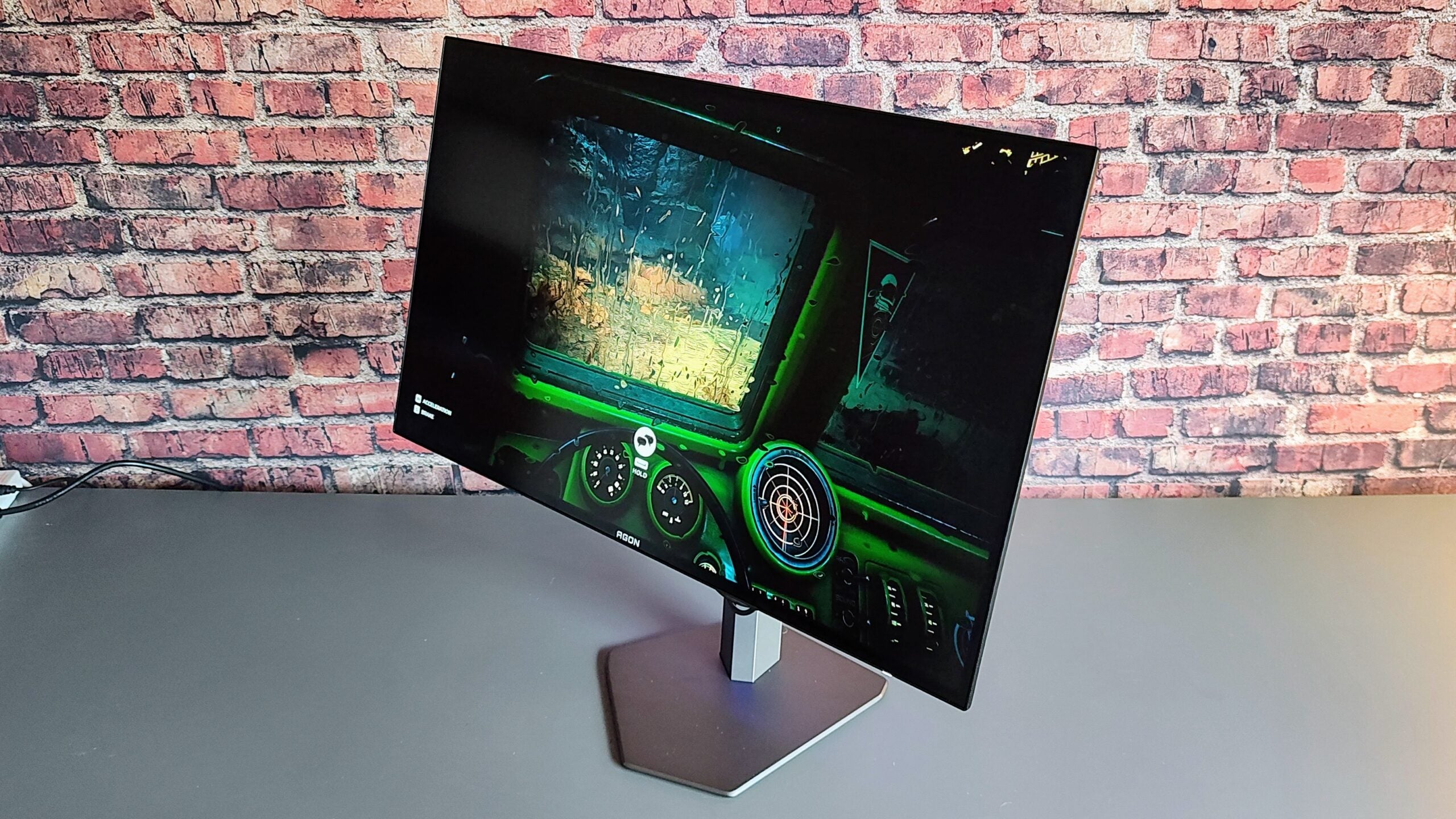Huawei MateView SE Review
An affordable and good-looking mainstream monitor
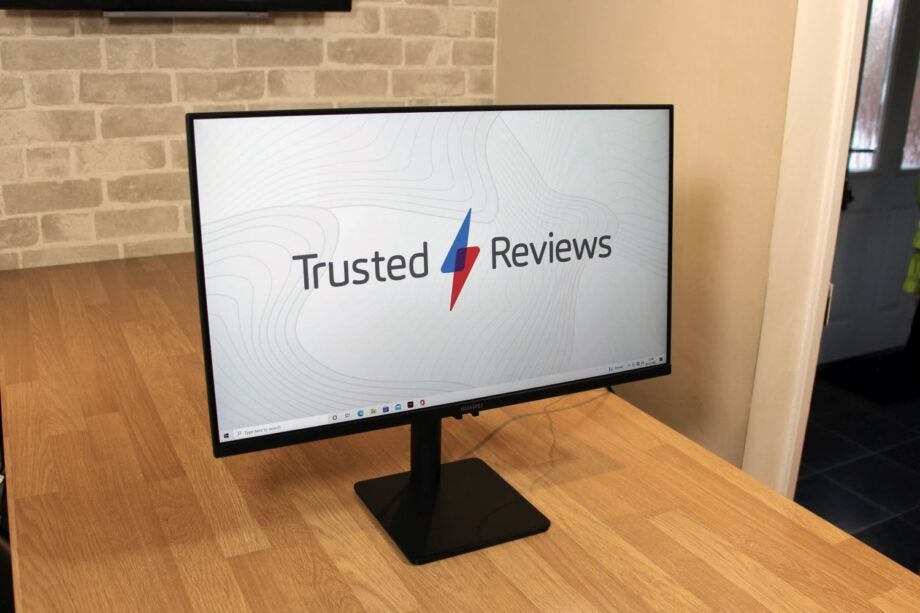
Verdict
The Huawei MateView SE is an affordable monitor, and it deploys rock-solid everyday image quality and a good-looking design, but you should look elsewhere if you want more connectivity or adjustment options.
Pros
- Good core image quality
- Sleek, stylish design
- Extremely affordable
Cons
- Basic connectivity
- Other screens have more adjustment
- Middling movement options
Availability
- UKRRP: £118
- EuropeRRP: €148
Key Features
- Good-looking exteriorThe slick base, stylish stand and tiny bezels mean that the Huawei MateView SE looks far better than its price suggests – and that it won’t seem out of place in any office or home situation.
- A solid mainstream specificationIts 1080p resolution means you have enough space for web browsers and office apps, and IPS hardware inside also ensures decent colour quality.
- Cheaper than the competitionThe MateView SE is available in two different models, with one offering more movement options. But no matter which one you buy, it’s always a more affordable product than its biggest rival.
Introduction
Many of Huawei’s products – from monitors to laptops and smartphones – are pretty expensive, but the Huawei MateView SE bucks the trend with UK and European prices that start at just £119 and €149, respectively.
That’s incredibly cheap for a high-quality display that should slice through all of your daily computing tasks, but the low price does mean that you have to accept some compromises, like a relatively small 23.8-inch diagonal and a lack of high-end features.
And, because it’s a Huawei product, you’ll also have to accept that this panel is currently not available to buy in the US.
Still, there’s plenty to like about this stylish, affordable screen, and it looks great on paper when lined up with the competition. The Huawei’s closest rival is the Dell P2319H, and that display is pricier at £182/$209/€208. Can the MateView SE find a spot on the best monitor chart?
Design and Features
- A slick, robust design with slim bezels
- Easy to build and with a solid core specification
- Doesn’t have the connectivity of rivals
Lots of budget displays look old-fashioned and underwhelming, but that’s not the case with the Huawei MateView SE.
The display sits on a small, sleek metal base and attaches to a slick cylindrical stand. Head up to the display and you’ll find surprisingly slim bezels that look good and ensure that it can work effectively in a multi-monitor setup.
The good looks outpace the clunky base of the Dell P2319H, and the MateView SE has solid build quality throughout. There’s a little movement in the plastic rear, but it’s no concern, and this monitor is easily sturdy enough to withstand home or office life.
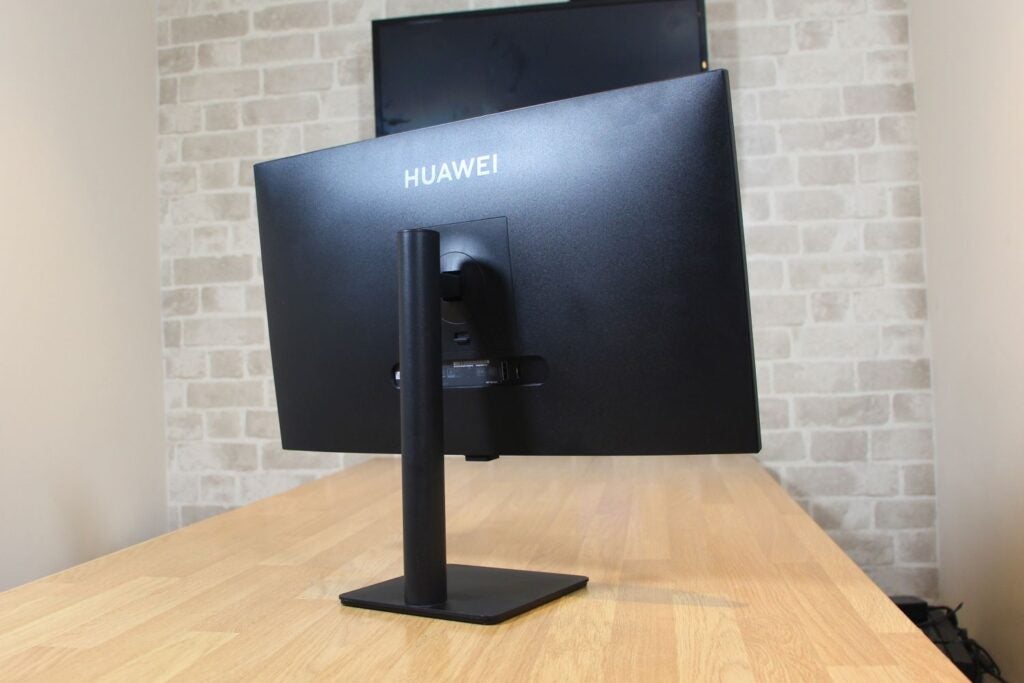
The Huawei only weighs 4.5kg, so it’s a bit lighter than the Dell, and it’s easy to build: the stand snaps into the back of the screen and you don’t need tools to attach the base. The MateView SE’s 23.8-inch diagonal outstretches the 23-inch Dell P2319H, but the former is still relatively compact and pretty easy to fit into tighter spaces and onto smaller desks.
Huawei produces two models of the MateView SE: a standard monitor and one with improved adjustment options.
The standard model costs £119, or €149, but it only has 23 degrees of tilt and no other movement. Spend £139, or €189, on the adjustable stand edition and you get that tilt alongside 110mm of height movement and portrait mode ability. Both support 100mm VESA mounting.
Happily, the pricier model is more affordable than the Dell P2319H, but the Dell monitor still has more height adjustment and side-to-side swivel movement, so it’s even more versatile.
There are no other differences between the two Huawei models – but it’s a bit basic elsewhere. It has single HDMI and DisplayPort inputs, whereas the Dell P2319H goes further with a legacy D-SUB input and four USB ports. The Dell has a handy cable-routing hole, but you don’t get that option on the Huawei. Neither display has speakers or an audio jack.
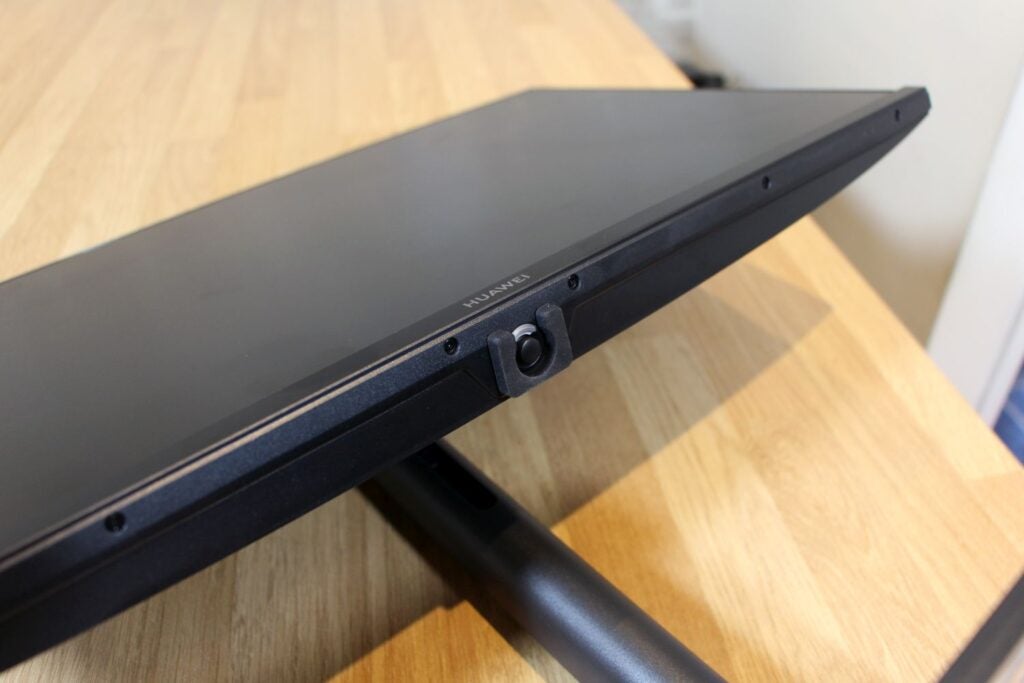
The MateView SE is managed with a straightforward and responsive on-screen display, and a joystick below the screen navigates the menus. One word of warning: Huawei installs a piece of foam around the joystick to protect it in transit. It’s hard to remove, but it’s supposed to come off once you have the panel in position. When that’s done, the joystick is far easier to use.
On the outside, this monitor is a good-looking display without as many features as its main rival. On the inside, the two are similar: both have 1080p IPS hardware with 8-bit colour.
The MateView SE’s panel goes further in a couple of minor categories. Its 75Hz refresh rate supports AMD FreeSync and it has a 5ms response time, while the Dell P2319H has a 60Hz refresh rate with no syncing and an 8ms response time.
That improvement won’t turn the Huawei into a top-notch gaming display – and it’s certainly not good enough for eSports – but it does mean that everything looks a bit smoother and you’ll have a better time with mainstream single-player games.
Image Quality
- Decent contrast and fine everyday brightness
- Solid colours in the sRGB and DCI-P3 spaces
- Rivals have marginally better contrast levels
The Huawei MateView SE’s Full HD display might fall behind the Dell P2319H when it comes to physical versatility, but the two panels trade blows in benchmarks.
The MateView SE’s Delta E of 2.08 improves upon the P2319H’s result of 2.7, and the Huawei screen rendered 99.8% of the sRGB gamut at a volume of 123.2%. That’s a big improvement on the Dell and a result that ensures you’ll get a punchy, broad range of colours from this screen. The colour temperature of 5928K is a little wayward, but it’s on the warm side, so colours don’t look pallid.
Huawei’s panel produced 87.3% of the DCI-P3 gamut, too. So while the MateView SE doesn’t have the brightness or ability to produce HDR content, you’ll still get a wider range of colours.
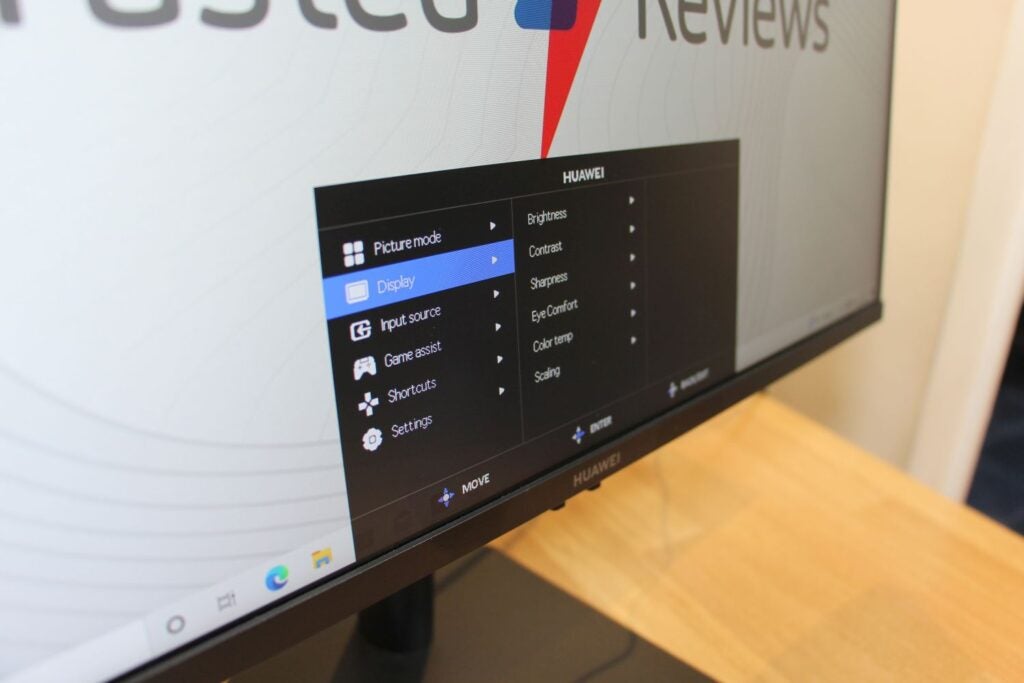
Out of the box, the MateView SE’s brightness level of 191 nits combined with a black point of 0.18 nits to produce a contrast ratio of 1061:1. None of those figures are quite as good as the P2319H, as they mean that the Dell has a bit more depth in darker areas and a tad more vibrancy. However, the Huawei’s results are still good enough for any everyday scenario.
The MateView SE’s maximum brightness of 260 nits mirrored the P2319H, but the Huawei monitor fell behind in uniformity tests. The MateView SE lost 14% of its backlight strength in the bottom corners, while the Dell barely varied.
These two screens are closely matched, but I think the MateView SE is marginally better than its key rival. The Huawei is easily good enough for any everyday work, browsing the web and casual gaming, and it has a broader array of more accurate colours than the Dell – so it’s capable of handling some light content creation work, too.
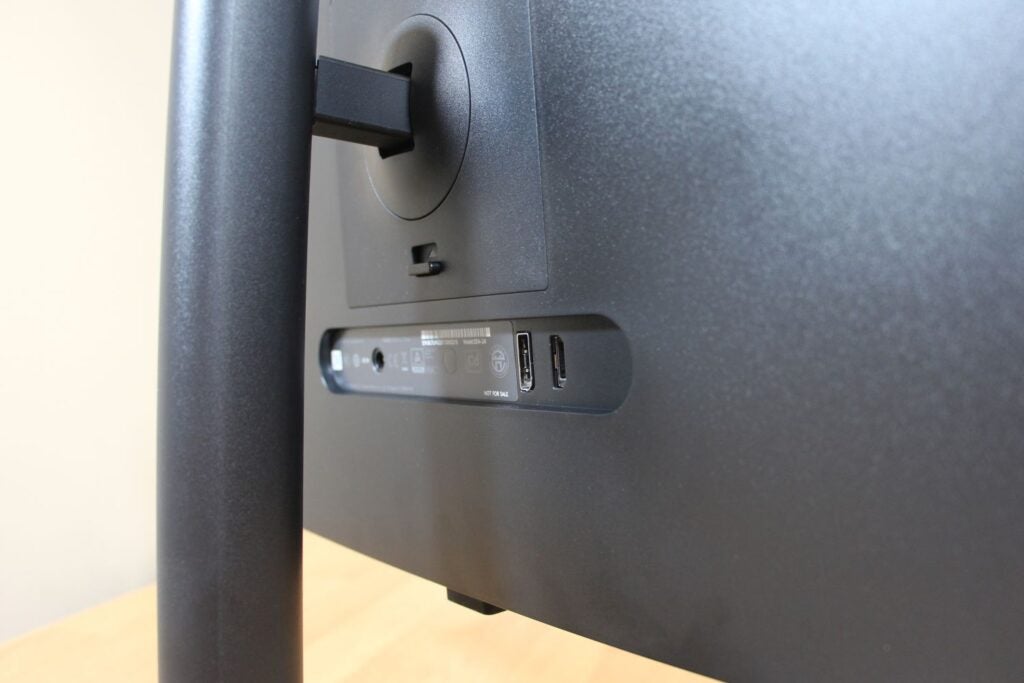
Its contrast and uniformity don’t quite stack up when compared with the Dell, and it does mean that the latter has slightly bolder visuals. But the MateView SE is still not bad here, and everyday use is barely affected.
Outside of benchmarks, the Huawei is better-looking and more affordable than the Dell, but the P2319H fights back with better connectivity and movement.
It all depends on how you’re going to use your new screen, then. If you’d prefer better colours, a slick design and a lower price, then the MateView SE should be in your basket. But if you need a broader range of features, the P2319H is more suitable.
Save money with Trusted Reviews vouchers
Fancy getting a major discount on some of the biggest Huawei products currently available? Then you’ll be pleased to know that our team has secured numerous vouchers and promo codes from Huawei, all in the name of saving you money.
Latest Deals
Should you buy it?
You want a good-looking everyday screen that won’t break the bank: The MateView SE is affordable, stylish and has solid mainstream image quality, so it’s an ideal all-rounder for smaller spaces.
You need lots of ports, high-end colour ability, or something larger: The MateView SE is a compact display without much connectivity, so you should shop elsewhere if you want to connect to lots of devices – or if you need something for creative work.
Final Thoughts
The Huawei MateView SE is a good-looking, affordable and capable mainstream display, so it’s a good purchase if you need something relatively small for your home or office. But other panels have more connectivity, movement and high-end colour ability.
How we test
We use every monitor we test for at least a week. During that time, we’ll check it for ease of use and put it through its paces by using it for both everyday tasks and more specialist, colour-sensitive work.
We also check its colours and image quality with a colorimeter to test its coverage and the display’s quality.
We used as our main monitor for at least a week.
We used a colorimeter to get benchmark results.
We used our own expert judgement for image quality.
FAQs
Image quality is perfectly reasonable for 1080p gaming, although the low refresh rate rules out competitive play.
Trusted Reviews test data
Full specs
Sustainability
Trusted Reviews holds the fact that global warming is not a myth as a core value and will continuously endeavour to help protect our planet from harm in its business practices.
As part of this mission, whenever we review a product we send the company a series of questions to help us gauge and make transparent the impact the device has on the environment.
We currently haven’t received answers to the questions on this product, but will update this page the moment we do. You can see a detailed breakdown of the questions we ask and why in our sustainability info page.


